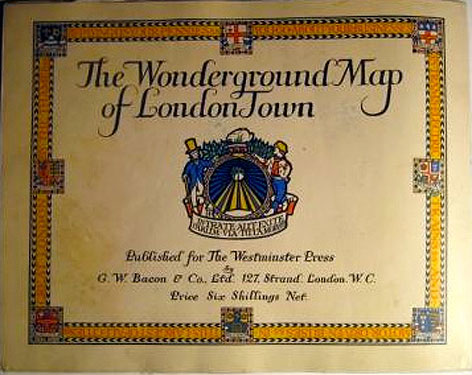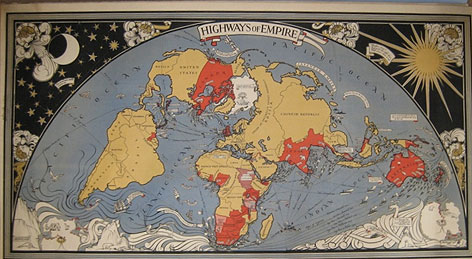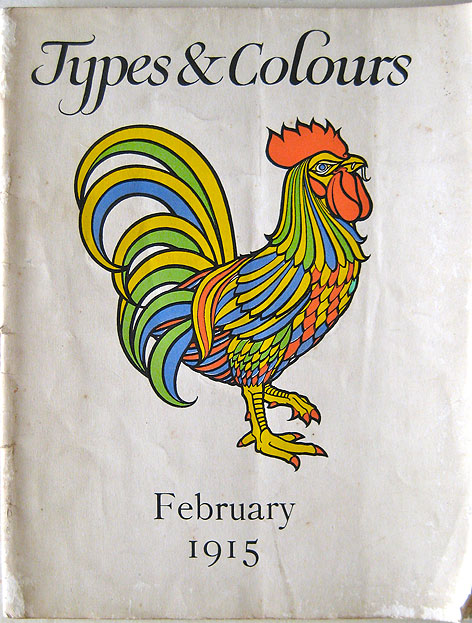22nd Jul 2011 - 31st Aug 2011
University Gallery
Open Mon - Sat / 10am - 5pm

For the first time in many decades a wide range of Max Gill's extraordinary works will be brought together through a pioneering exhibition at the University of Brighton Gallery in Summer 2011. Hosted by the University's Faculty of Arts, it will display decorative maps and other selected material. Open to the public from 22 July, this rich and absorbing visual panorama will provide a long overdue opportunity to rediscover and appreciate the work of a remarkable, influential and multi-talented artist, designer and architect of the first half of the twentieth century.
An important one-day symposium, drawing on a wide range of personal, professional and historical expertise in the field, will be held on 22 July to coincide with the opening of the exhibition. This will provide an opportunity to share, promote and encourage research and scholarly activity about Max Gill and his work.
Visit the MacDonald Gill symposium webpage.
Book your place on the symposium
You may also be interested in the blog post of the conservation and archive team member on this exhibition project, Sirpa Kutilainen. Visit the diary/blog Conserving the Archive. A digital resource, also hosted by the Design Archives, was built to go alongside this major exhibition. Visit the Macdonal 'Max' Gill Digital Resource.
Further enquiries about the exhibition and the symposium should be addressed to:
Madeleine Meadows, m.j.meadows@brighton.ac.uk
 Image: Max Gill, 'Tea Revives the World'
Image: Max Gill, 'Tea Revives the World'Max Gill (1884-1947) was an artist and designer of remarkable versatility. An illustrator, letterer, map-maker, architect, decorative artist and mural painter, he was perhaps most widely known in his lifetime for his pictorial maps and graphic designs for transport and communications companies in the first half of the twentieth century.
His 1914 'Wonderground' map of the London Underground system inspired a resurgence of pictorial and decorative map-making in Britain and the United States, Latin America and Australia. The huge North Atlantic map he produced, complete with moveable crystal ship, is still to be seen on the preserved liner Queen Mary, now a hotel permanently moored in California.
 Image: Max Gill, 'Wonderground'
Image: Max Gill, 'Wonderground'The brother of artist and typographer Eric Gill, Max has been comparatively and undeservedly forgotten. The discovery by family members of a large archive of his work has provided the perfect opportunity to appreciate his achievements and reposition him as a widely recognised artist of his time. Examples of his work were admired in contemporary exhibitions as far afield as Australia. More than sixty years after it first appeared in 1940, Max's celebrated 1940 work, 'Tea Revives the World', was displayed in the British Library's Magnificent Maps: Power, Propaganda and Art in 2009.
Max Gill carried out work on behalf of Empire trading interests, particularly through the Empire Marketing Board. Attracting a great deal of contemporary public interest, his advertisements raised issues of Britishness and British taste, attitudes to Empire and global trade, as well as changing approaches to cartographic representation. A member of the Art Workers Guild and student at the Central School of Art, London, Max Gill drew on a training that was influenced by the Arts & Crafts Movement with its emphasis on simplicity in design, making by hand and the social importance of a well-designed environment. Gill’s work for the Imperial War Graves Commission, designing the lettering that came to be engraved on a multitude of headstones, employed such principles to great effect.
 Insert: 'Highways of the Empire' image
Insert: 'Highways of the Empire' imageFrom his commercial posters to his public information maps and from his humorous and populist style to his enduring memorial lettering, Max Gill’s work touches on a wide range of social, political and cultural issues of the first half of the twentieth century. The show at the University of Brighton will provide an unprecedented opportunity to experience in one exhibition the richness of his contribution to the visual arts.
Work around the exhibition and symposium has helped uncover interesting new material. A pair of tapestry panels designed in 1938 by MacDonald Gill for the Guildhall, Coventry, have just been rediscovered after being presumed lost for over 20 years. Gill’s Coventry tapestries were woven by the Morris Art Workers and have been found in excellent condition. Read local report from BBC Coventry and Warwickshire.
 Image: Max Gill, cover for Types and Colours with Cockerel image
Image: Max Gill, cover for Types and Colours with Cockerel image